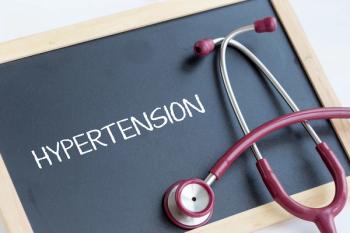
PROMISE Results Have Implications for Managed Care; May Change Guidelines and Put Pressure on Payers to Cover CTA
A head-to-head comparison found patients receiving heart CT scans fared about as well as those receiving a variety of functional tests, although CT did a better job of identifying those who needed follow-up procedures. The study's lead author predicts a change in clinical guidelines, although critics question whether patients should receive so much radiation.
Patients who had computed tomography angiography (CTA) to evaluate their symptoms of heart disease fared about as well as patients who had functional testing for coronary artery disease (CAD), according to results of a large, federally funded trial that won praise from some on Saturday for its “real world” focus and some criticism for revealing how much the heart scans do to expose patients to radiation.
The study’s lead author and an editorial in the New England Journal of Medicine,1,2 which simultaneously published the results, predicted updates to clinical guidelines—and perhaps pressure payers to cover CTA, especially since a companion economic study showed CTA isn’t the healthcare cost-driver that some feared. About 4 million Americans similar to those in the study need tests each year for mid-range symptoms of heart disease.
PROMISE, which stands for Prospective Multicenter Imaging Study for Evaluation of Chest Pain, is one of the highlights at the 64th Annual Scientific Session at the American College of Cardiology, being held March 14-16, 2015, in San Diego, California. The trial’s clinical results were presented early Saturday, with economic results slated for Sunday’s late-breaking session. However, top-line results for both were outlined at a press conference as the clinical data and editorial appeared in NEJM, which declared, “The cardiovascular imaging field is delivering comparative effective studies with results that are likely to change clinical practice.”
The National Heart, Lung, and Blood Institute funded the study, which cost $40 million according to the Associated Press.
From a managed care standpoint, results of the PROMISE trial are groundbreaking on several fronts. “No one’s done a clinical outcomes study of this size on imagining,” said Pamela S. Douglas, MD, of the Duke Clinical Research Institute, lead author of the clinical study. She predicted the findings will elevate CTA from a “maybe” to a “definitely appropriate” for physicians in clinical practice.
And, the study combines clinical findings with an economic analysis that will be important for payers and policymakers. Daniel Mark, MD, also of the Duke Clinical Research Center, who presented the economic data, said that CTA at the 2-year mark increased overall costs by less than $500 per patient, and the procedure “allows a more efficient use of downstream catheterization,” than functional tests.
However, Eric Topol, MD, of the Scripps Clinic in La Jolla, California, tweeted a critique of the NEJM editorial and later told the Associated Press that the findings were “a bad reflection on American medicine” due to the radiation exposure patients received.
The study involved 10,003 patients with no prior diagnosis of CAD but symptoms that made physicians suspect heart disease, such as chest pains or shortness of breath. Almost all had a risk factor associated with CAD, such as diabetes, high blood pressure, or a history of tobacco use. Half were randomly selected for CTA, which gives physicians a view of the arteries to determine whether they are narrowing. The others took an electrocardiogram, stress echocardiogram or nuclear stress test; each of these tests evaluates the heart’s response to a stimulus. PROMISE represents the first time these 2 common tests have been compared head-to-head, an important milestone since current guidelines do not give either test priority.
Clinical Findings. The mean age for patients was 60.8 years, and 52.8% of patients were women. Over a mean follow-up of 25 months, a primary end point—a composite of death, myocardial infarction (MI), hospitalization for unstable angina, or major procedural complications—occurred in 164 of the 4996 patients (3.3%) who received CTA. Among patients receiving functional testing, the primary end point occurred in 151 of the 5007 patients (3.0%) who received exercise electrocardiography (ECG), nuclear stress testing, or stress echocardiography. The vast majority of the patients in this group (67.3%) received nuclear testing, with 22.5% receiving stress echocardiography and 10.2% receiving exercise ECG. The difference in clinical outcomes between the 2 strategies was not statistically significant.
Some questioned whether any positive conclusions could be drawn from these results, but both Douglas and Mark said that would be taking a narrow view. There were many results from the trial that researchers did not expect to see, such as the very low rate of cardiac events. Douglas pointed out that patients who had CTA were more likely to take medications that controlled the number of cardiac events.
Economic Findings. Mark explained that for cardiologists, the arrival of CTA presented a holy grail they had always hoped for—the opportunity to “see” what was happening in the arteries. And yet as the technology was being developed, “Some of us have had second thoughts whether that’s such a good idea.” Would CTA end up being an expensive, overused technology that would lead to unnecessary radiation exposure and downstream costs, as physicians pursued additional testing of uncertain things that turned up in this diagnostic test? Or would CTA lead to precision care, with only those needing revascularization going for the procedure?
Such fears, as well as concerns about radiation exposure, have led to lukewarm reviews in clinical guidelines and among payers, although Mark noted that even among the functional tests, doctors in PROMISE overwhelmingly chose the high-tech, higher cost nuclear test option. Experts on hand noted that improvements to CTA are reducing the level of radiation exposure that patients experience.
Mark’s data found that overall, the cost of a CTA test was estimated to be $404. For the functional tests, the cost of echocardiography with an exercise stress test was $514, while the cost of echocardiography with a pharmacologic stress test was $501. Similarly, a nuclear test was $946 and an exercise and pharmacologic stress testing was estimated to be $1132. An ECG was the cheapest at $174.
CTA increased the use of invasive catheterizations by 4% over functional testing, and those in the CTA arm were twice as likely to have revascularization. However, Mark noted that as experts predicted, CTA does appear to do a better job of correctly identifying those patients in need of additional procedures: 51% of the CTA patients referred for catheterization underwent revascularization compared with just 39% of the functionally studied patients. And, fewer patients referred for catheterization via CTA had no obstructive disease compared with those referred via a functional test—an important point, because it is not cost-effective for patients to have unnecessary invasive procedures.
References
1. Douglas PS, Hoffman U, Patel MR, et al. Outcomes of anatomical versus functional testing for coronary artery disease [published online March 14, 2015]. N Engl J Med. doi:10.1056/NEJMoa1415516.
2. Kramer CM. Cardiovascular imaging and outcomes—PROMISEs to keep [published online March 14, 2015]. N Engl J Med. doi:10.1056/NEJMe1501924.
Newsletter
Stay ahead of policy, cost, and value—subscribe to AJMC for expert insights at the intersection of clinical care and health economics.














































